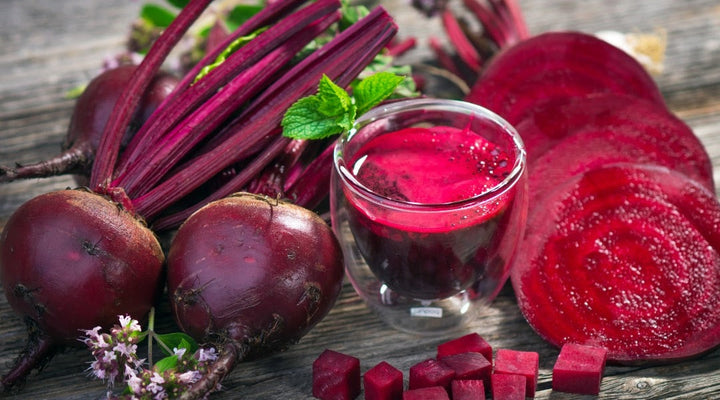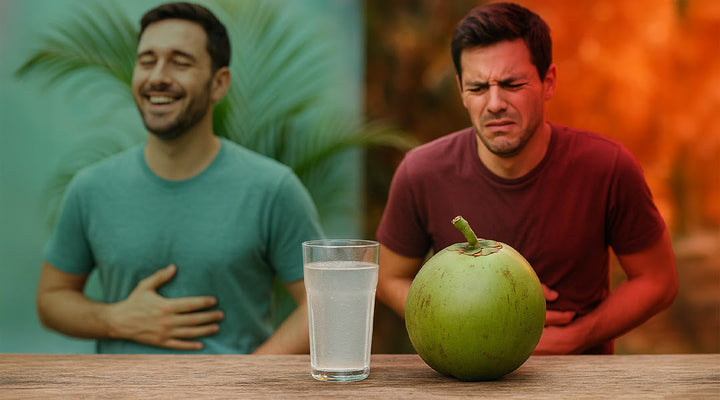
Enjoy The Powerful Health Benefits Of Vitamin D Through Sunshine & Supplementation
Did you know your body could be struggling to absorb calcium, weakening your bones over time?
Many view this as a normal part of aging, but what if I told you that taking regular walks around the block in the sun, tending to the beautiful flowers in your garden, or simply enjoying a cup of coffee under the warmth of the sun’s rays on your back porch could help to keep your bones healthy?
Then, what about sickness?
This winter seemed extra brutal concerning illness. Personally, I battled multiple viral infections, and unfortunately, so many folks I’ve talked to seem to have succumbed to the same fate, even those who claim to have not been ill for many years.
Well, what if I told you that enjoying those same activities listed above (and more) could provide a powerful boost to your immune system, aiding your body in naturally fighting off infections?
We’re approaching a time of year when the temps are warming, the flowers are blooming, the trees are budding, the grass is in need of trimming, and the sunshine is calling us to step outside and enjoy the light, warmth, and everything else the spring and summer seasons bring.
And, with this seasonal shift and greater amount of time spent in the sunshine, we’re not only gifted with porch sitting, yard mowing, gardening, baseball, and pool time, we’re also granted the gift of vitamin D!
Vitamin D is a vital nutrient, one your body needs for keeping your bones healthy, carrying messages between your brain and the rest of your body, fighting off infections, preventing disease, and more.
Unfortunately, your body doesn’t produce vitamin D on its own.
In fact, the only way your body is able to make this powerfully needed component of whole-body health is through exposure to sunlight.
Of course, this is why many of us support our bodies through vitamin D supplementation when outdoor time is limited, but the greatest way to naturally aid your body in the production of vitamin D is by simply enjoying “your day in the sun” (as the saying goes).
So, let’s take a look at all the spring and summer months have to offer as we spend a little time in the sun, looking at how our bodies use this exposure to make vitamin D, how this vitamin aids in whole body health, and how we can boost these benefits through supplementation when needed.
Sunlight, Vitamin D, And YOU

Today, more and more people are spending the majority of their time indoors.
And today, vitamin D deficiency is one of the most common nutrient deficiencies in the world!
Why does this matter?
Because vitamin D is needed for a wide range of functions, impacting so many areas of health.
We’ll explore those impacts shortly, but first, let’s do a deep dive into vitamin D…
First, what is vitamin D?
In food, vitamin D is a fat-soluble vitamin.
Unfortunately, there are only a very small number of foods that contain vitamin D.
Then, some foods have this vitamin added to them through fortification processes, such as whole milk and some cereals.
But, to obtain this vitamin naturally, you must be exposed to the sun.
As for me, I get a little excited when it comes to this benefit, because one of my favorite things about spring and summer is the warm feeling of the sun's rays hitting my skin.
Each sunny day throughout the warmer seasons, in the middle of the day, after I finish my lunch, I spend 10-15 minutes (depending on the UV strength at the time) on my back porch in my lounge chair.
No phone. No work. No interruptions. Just blue skies, sunshine, birds chirping, and peace.
And, here’s what’s happening within my body as I thoroughly enjoy my beloved moments in the sun…
- When the sun’s ultraviolet B rays hit my skin, they make a dash for the cholesterol in my skin cells, which provides energy for my body to then synthesize or make vitamin D.
- Here, 7-dehydrocholesterol converts previtamin D into a more active form of vitamin D known as vitamin D3.
- To do this, previtamin D is converted to calcitriol as it travels through my bloodstream to my kidneys and liver.
- Then, vitamin D actually becomes what is known as a secosteroid hormone.
Typically, we don’t think of vitamins as hormones, but calcitriol, the active form of vitamin D, is actually “the most powerful hormone in the body, [having] the ability to activate over 1,000 genes...”

Of course, this is how/why vitamin D can affect so many areas of health and wellness.
When you’re deficient in vitamin D, you may experience any of the following symptoms:
- Greater sensitivity to pain
- Depression
- Daytime sleepiness
- Low mood
- High blood pressure
- Muscle weakness
- Stress fractures
- Decreased endurance
- Frequent or recurring illness
- Learning disorders
But, when your body has sufficient vitamin D, it can bring many benefits, including the following…
1- Bone Health

Vitamin D aids in the absorption of calcium.
So, when you have sufficient levels of vitamin D, as you consume foods or beverages that contain calcium, your body is better able to absorb it.
Vitamin D along with calcium then serve to protect bones, specifically in aging adults, from osteoporosis.
Vitamin D also aids in bone mineralization, helping calcium and other needed minerals effectively be deposited into bone tissue, which makes your bones strong/hard.
On the reverse side of this, vitamin D deficiencies have been shown to contribute to soft bones - rickets in children and osteomalacia in adults.
And, should you experience an injury to your bones, such as a fracture, vitamin D aids in the formation of hard callus, a crucial need for bone repair.
2- Muscle Health

Vitamin D influences the way calcium is received and used in muscle cells.
Some have even found vitamin D to regulate the very structure of muscle cells.
On the flip side of this, vitamin D deficiencies have been linked to decreased muscle strength and a decline in muscle function.
This also affects bone health as muscle strength plays a role in balance.
Those with decreased muscle strength, commonly seen in elderly adults, are at a greater risk of falling, and in vitamin D deficient adults, this commonly leads to broken bones (as a result of a fall).
3- Disease Prevention

Inflammation is now recognized as a leading (underlying) factor in most chronic diseases.
Vitamin D gives a win here by helping your body reduce inflammation.
Vitamin D essentially blocks the production of inflammatory cytokines while increasing the production of anti-inflammatory cytokines.
This is true for multiple diseases, but let’s examine cancer specifically:
In the case of cancer, “vitamin D influences the inflammatory processes involved in cancer progression.”
Vitamin D also “has the potential to inhibit tumor development.”
4- Immune Function

Similar to its role in disease prevention, vitamin D also serves to boost your immune system.
Here, it aids in your body’s first line of defense against invading pathogens, etc. by promoting the production of antimicrobial peptides.
Vitamin D also influences T and B cell activity, both of which are crucial in fighting infections and helping your immune system respond correctly to threats.
Vitamin D even regulates the activity of those cells responsible for initiating immune responses.
5- Brain And Hormonal Health

Sufficient levels of vitamin D provide protection to your brain, specifically lessening damage and protecting against degeneration.
Because of this, deficiencies have been linked to cognitive decline.
Vitamin D even aids in your brain’s ability to change (needed changes or growth) over time!
But, vitamin D also works within the brain by influencing neurotransmitters, which affects hormonal health.
Here, vitamin D impacts the production of serotonin and melatonin, hormones which are tasked with regulating mood, sleep, and more.
And, this isn’t an exhaustive list!
Vitamin D also aids in heart health (blood pressure reduction), cell growth and repair, oral health, skin health, weight loss, memory, and some have even found benefits regarding blood sugar regulation, impacting insulin sensitivity and secretion.
But, for time’s sake, let’s move on to a likely question surfacing in many minds - how can you safely get needed sun exposure, improving vitamin D levels?
Safe Sun Exposure For Optimal Vitamin D Synthesis

I’m one of those people who commonly think, if 1 is good, 2 is better…if 5 is great, 10 is grand.
As you can imagine, this default thinking gets me into some trouble from time to time, and this is definitely the case with sun exposure for vitamin D.
In fact, when it comes to sun exposure, which is a really, truly, wonderfully good thing, this is one of those “too much of a good thing can be a bad thing” types of situations.
I can remember when my children were young, their pediatrician commonly told me that it was now recommended that no one ever leave their house without wearing sunscreen.
The thing is, this type of advice is now seen as one of the things which has contributed to vitamin D deficiencies in so much of the world’s population.
But, too much time in the sun without protection leads to burns…or worse!
See the conundrum?
How can you receive needed UVB rays without damaging your skin?
Or, what’s the best way to safely benefit from sun exposure?
There’s no doubt about it, the sun is the best source used by your body for making vitamin D.
And, research has shown that midday, or around noon, is the best time to receive these benefits.
“At noon, the sun is at its highest point, and its UVB rays are most intense. That means you need less time in the sun to make sufficient vitamin D.”
To amplify this benefit, research also has proven that our bodies are most efficient at making vitamin D at noon.
So, how can you reap these benefits safely?
- First, don’t overdo it! Your body only needs approximately 10 minutes or less of sun exposure between the hours of 11 am and 3 pm to make vitamin D.
- Check the UV radar. I mentioned earlier that I love sitting on my porch each sunny day in the warmer months, but my practice prior to stepping outdoors always includes checking the UV radar.
Many weather apps track UV now, so I commonly look up the UV before I go outside, and once I see the numerical listing, I look up how quickly one can burn under such conditions. This allows me to plan my outdoor time wisely. Some days this means I’m able to spend 10 minutes outside for my vitamin D time, other days this means I cut it short at 4-6 minutes.
- When out for long periods of time, wear light colored clothing. Darker colors attract the actual heat from the sun greater than lighter colored clothing. This can cause your body temperature to rise more quickly, potentially leading to complications from the heat. So, when venturing out for a little vitamin D enrichment or simply some fun in the sun, choose lighter colored clothing.
Ultraviolet B Rays In A Bottle

Now for supplementation.
What happens when you’re not able to be out in the sun very often?
What happens if you’re able to spend plenty of time outdoors, but this necessitates more shade time than sun time?
And, what about folks with higher amounts of melanin, something that unfortunately translates to slower vitamin D synthesis from sun exposure?
Each of these situations, and more, can lead to a need for vitamin D beyond healthy sun exposure, and this is why most folks choose to add quality vitamin D supplementation to their diets.
In fact, most of the research you’ll find regarding the studied benefits of vitamin D involves supplementation…in other words, helpful boosts in addition to enjoying those warm spring and summer rays!
Of course, like anything you put into your body, quality is key!
For that reason, we’ve created a vitamin D supplement that pairs perfectly with your existing coffee routine.
Our Vitamin D+K2 drops are high absorbing, formulated by a renowned nutraceutical research expert, engineered to enhance your immune system, improve sleep quality, bone strength, and so much more, simply by adding a dropperful to your daily cup of Lifeboost!
So, let’s close out by taking a look at those same vitamin D health benefits we detailed above, now examining research linked to these same healthy rewards with added vitamin D supplementation.
1- Bone Health

Research has shown that higher intakes of vitamin D supplementation reduced hip and non spine fractures by roughly 20%.
Another study found that high doses of vitamin D taken intermittently actually increased fall risks in elderly populations, while a consistent or regular routine of supplementation provided the most benefit, leading researchers to conclude the necessity of consistency and adequate vitamin D supplementation.
In other words, taking big doses infrequently doesn’t cut it folks. Like most things in life, the best benefits are gained through consistency.
2- Muscle Health

Specifically in individuals with vitamin D deficiencies, supplementation was found to reduce the risk of falling in elderly populations due to an increase in muscle strength, attributed to improved vitamin D levels.
These studies also found improvements in postural stability and/or balance among participants, another benefit of improved muscle strength.
3- Disease Prevention

Studies have shown that increases in circulating vitamin D levels reduced both the occurrence and mortality rates in many types of cancers.
Regarding type 2 diabetes, some studies have found vitamin D to be beneficial to the “incidence, control, and complication of the disease.”
And, research concerning vitamin D deficiency found those individuals with the lowest levels were twice as likely to have a heart attack (in men) as those with high levels of vitamin D.
4- Immune Function

Typically, winter presents conditions which make it difficult for most folks to receive adequate sunlight, meaning vitamin D levels dip. This has led researchers to study the effects of supplementation on illness, and here’s what they’ve found:
- Significant benefits have been seen regarding vitamin D supplementation and reduced instances of acute respiratory viruses.
- Particularly in individuals with vitamin D deficiencies, supplementation improved immune responses.
- Supplementation caused a significant decrease in CRP levels (inflammation), which may be beneficial to overall inflammation levels in the body as well as those pertaining to lesser illnesses.
5- Brain And Hormonal Health

Researchers have found a link between vitamin D supplementation and “a slower decline in the cognitive domains of verbal fluency.”
Vitamin D supplementation has also been found to improve estrogen and progesterone levels, while also regulating serotonin and melatonin.
So, as you enjoy the spring and summer seasons, think about your time outdoors as a vitamin D boost, improving your health while warming your body (and your spirit).
Then, as you enjoy your daily cup of Lifeboost, you can amplify these sunny benefits easily through supplementation with our high absorbing vitamin D+K2 drops!
Check out Lifeboost Coffee Vit D+K2.
Medical Disclaimer
This content is for informational and educational purposes only. It is not intended to provide medical advice or to take the place of such advice or treatment from a personal physician. All readers/viewers of this content are advised to consult their doctors or qualified health professionals regarding specific health questions. Neither Dr. Charles Livingston nor the publisher of this content takes responsibility for possible health consequences of any person or persons reading or following the information in this educational content. All viewers of this content, especially those taking prescription or over-the-counter medications, should consult their physicians before beginning any nutrition, supplement or lifestyle program.
- https://draxe.com/nutrition/vitamin-d-benefits/#
- https://drjockers.com/sunlight-vitamin-d3-brain-health/
- https://www.healthline.com/nutrition/vitamin-d-from-sun#
- https://ods.od.nih.gov/factsheets/VitaminD-Consumer/#
- https://www.niams.nih.gov/health-topics/calcium-and-vitamin-d-important-bone-health#
- https://pubmed.ncbi.nlm.nih.gov/8642450/#
- https://www.hopkinsmedicine.org/health/wellness-and-prevention/vitamin-d-and-calcium#
- https://pubmed.ncbi.nlm.nih.gov/24792958/#
- https://www.frontiersin.org/journals/physiology/articles/10.3389/fphys.2021.660498/full
- https://pubmed.ncbi.nlm.nih.gov/37630813/#
- https://pmc.ncbi.nlm.nih.gov/articles/PMC6164284/#
- https://pmc.ncbi.nlm.nih.gov/articles/PMC3166406/#
- https://www.mdanderson.org/cancerwise/t-cells--b-cells-and-the-immune-system.h00-159465579.html
- https://pmc.ncbi.nlm.nih.gov/articles/PMC7551809/#
- https://pmc.ncbi.nlm.nih.gov/articles/PMC6132681/#
- https://www.pharmacytimes.com/view/vitamin-d-supplementation-has-brain-health-benefits
- https://diabetes.org/food-nutrition/diabetes-vitamins-supplements/low-vitamin-d-insulin-resistance#
- https://nutritionsource.hsph.harvard.edu/vitamin-d/#
- https://pmc.ncbi.nlm.nih.gov/articles/PMC3513873
- https://pmc.ncbi.nlm.nih.gov/articles/PMC7210535/#
- https://www.news-medical.net/health/The-Role-of-Vitamin-D-in-Hormonal-Balance.aspx#
- https://www.sciencedirect.com/science/article/abs/pii/S0889159113001785#
- https://www.thelancet.com/journals/landia/article/PIIS2213-8587(24)00348-6/fulltext#
- https://www.sciencedirect.com/science/article/pii/S2666149724000343
- https://pmc.ncbi.nlm.nih.gov/articles/PMC4067096/#
- https://theros.org.uk/blog/vitamin-d-welcome-to-the-sunlight-zone/#
- https://wonderopolis.org/wonder/why-does-black-absorb-heat#
- References for the article to confirm data and information.









